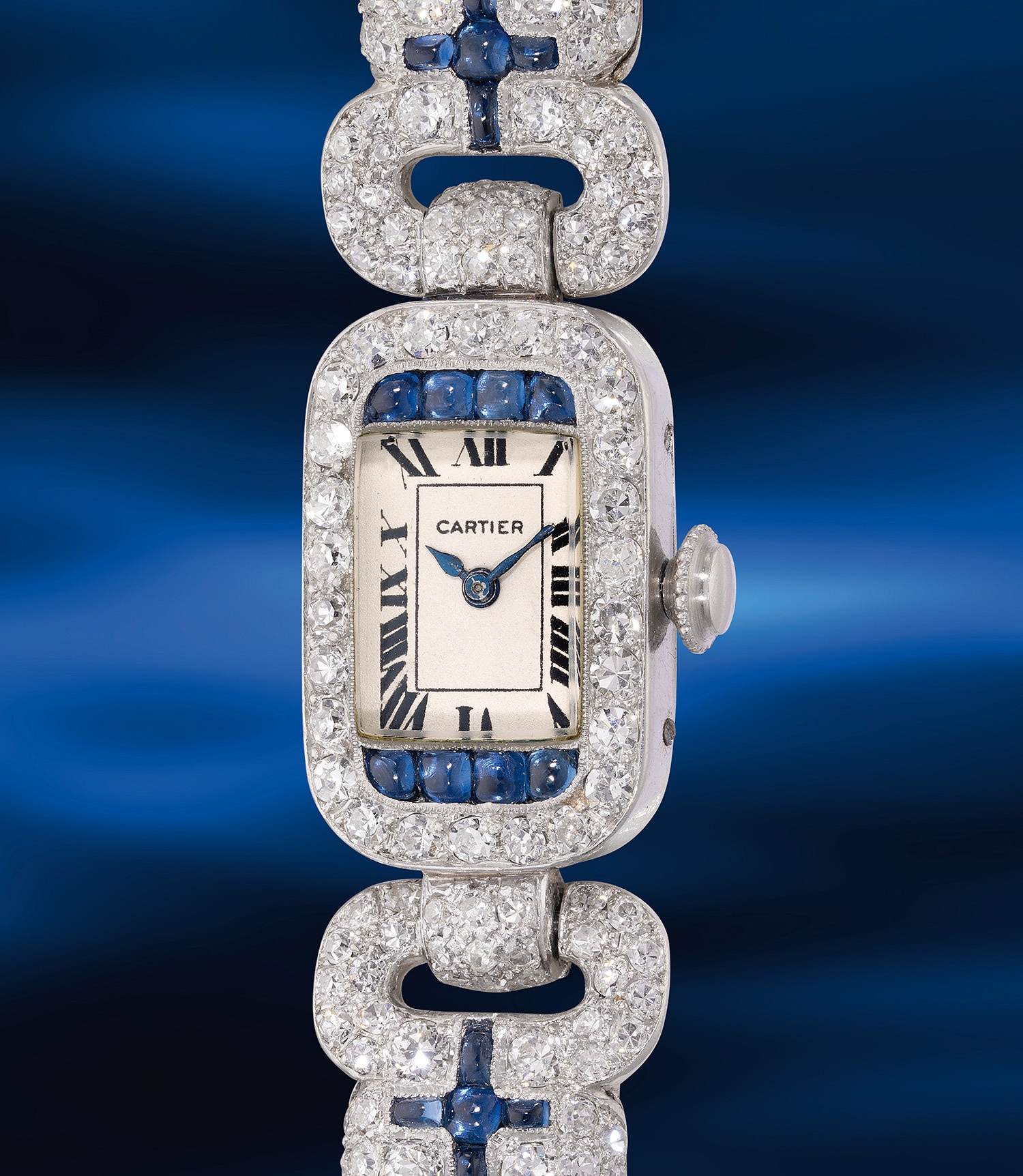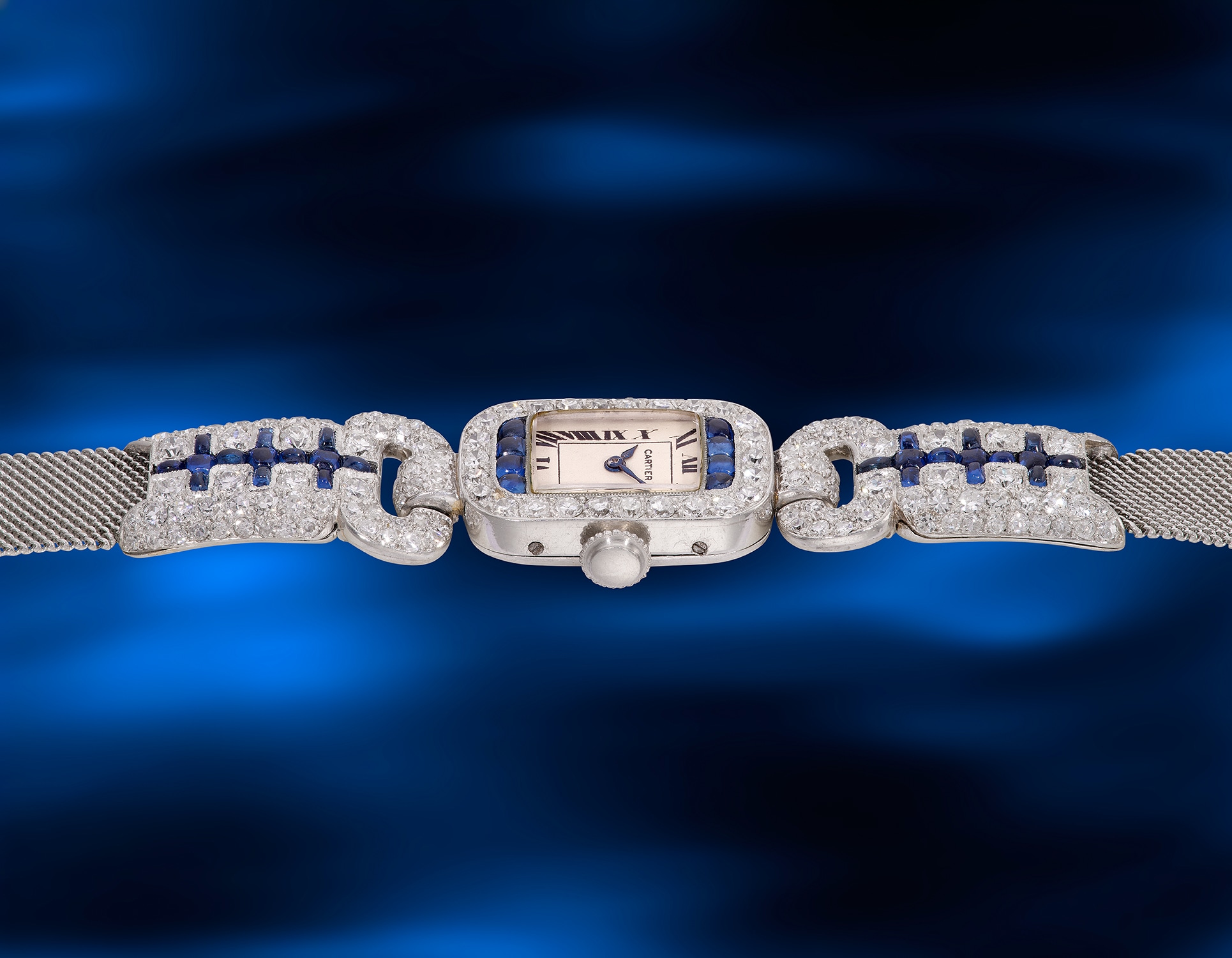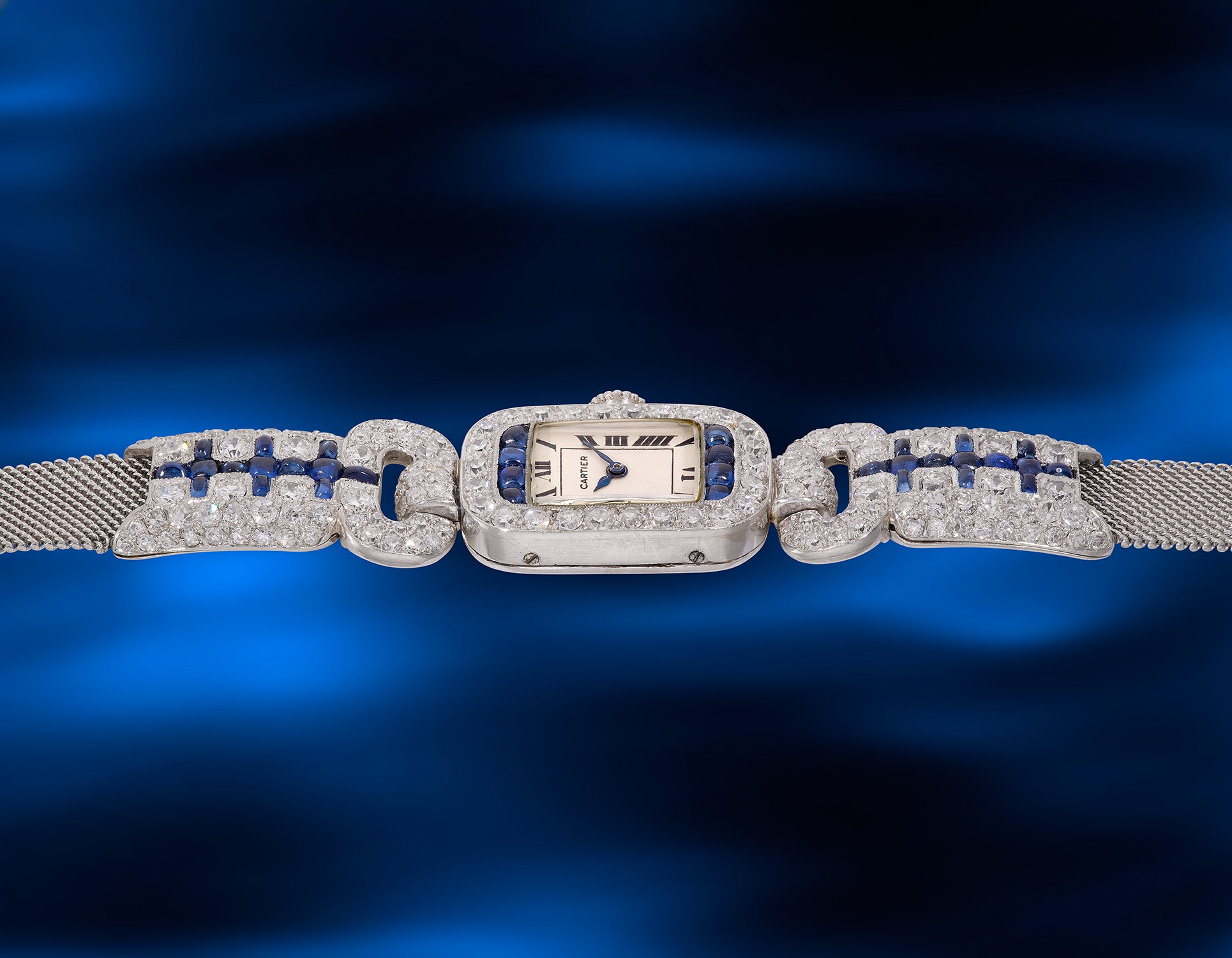







1009
Cartier
A lady’s magnificent and exceptional platinum, diamond, sapphire and black enamel-set bracelet watch with European Watch and Clock movement
Full-Cataloguing
Crafted to exceptional standards, this platinum Art Deco bracelet watch has been remarkably well-preserved given its age. The European Watch and Clock movement is period-correct, and the case features hand-stamped numbers on the inside, outside, and under the lug. The platinum Dog Head hallmark inside the caseback remains crisp, attesting to its authenticity. The clasp, embellished with enamel and diamonds, enhances the watch's striking beauty, reflecting Cartier's commitment to modern style during the early 1920s.
Additionally, the caseback is engraved with the heartfelt inscription “Joyce from Toby”, adding a personal touch to this significant gift.
Cartier
FrenchWith the Constitution of 1848 came a new standard for luxury in France. Founded one year prior by Louis-Francois Cartier, the house of Cartier was one of the first to use platinum in jewelry making. This incredibly expensive material became the stepping-stone for Cartier to experiment in form, mechanisms and attitude. It helped men move from pocket watches to wristwatches, effectively making the watch much more functional and prominent in a man's overall wardrobe.
Cartier did not only touch on functionality. Inspired by a commissioned painting by George Barbier featuring a black panther at the feet of an elegantly bejeweled woman, Cartier began incorporating wild animals in his designs—most notably, Cartier Panthère rings, bangle bracelets and watches. Yet it wasn't until the late 1960s that the house of Cartier debuted their iconic yellow and rose gold LOVE collection, which includes the famous bracelet that only a special screwdriver can open.